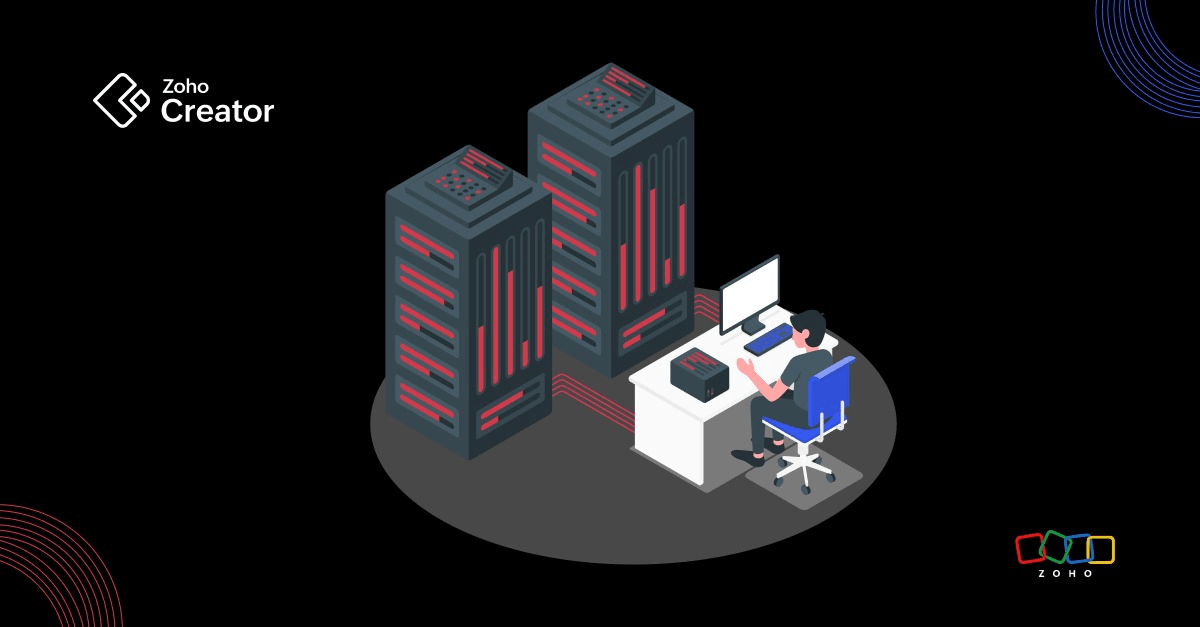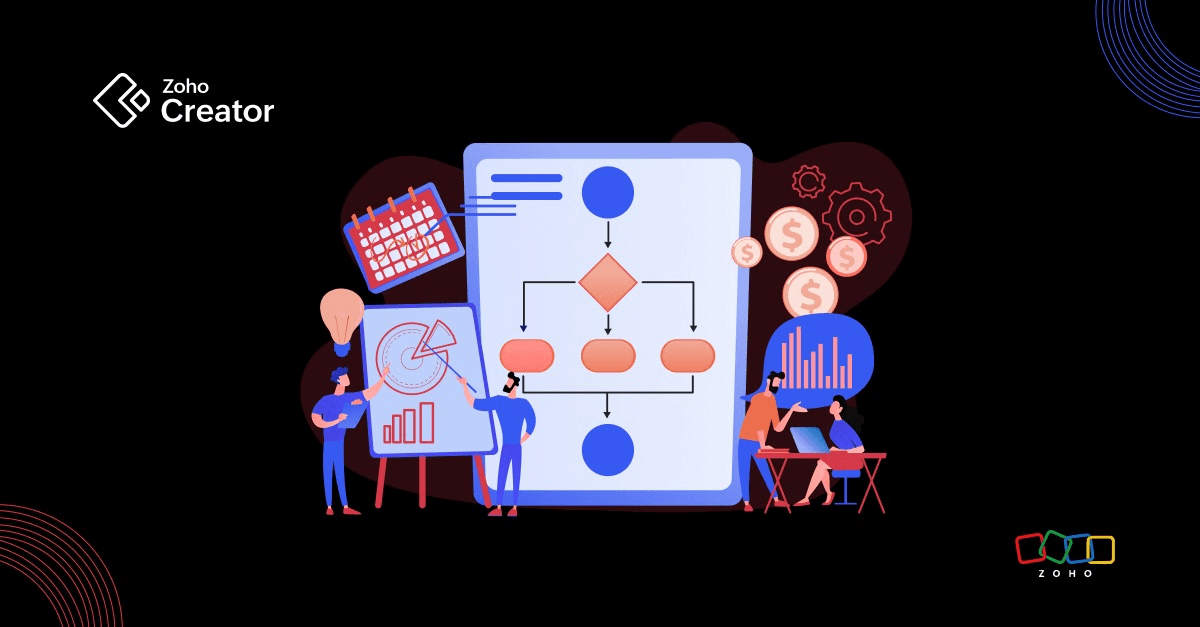- HOME
- Know Your Tech
- 4 reasons to opt for rapid application development
4 reasons to opt for rapid application development
- Last Updated : July 23, 2025
- 1.7K Views
- 6 Min Read
One thing that businesses need to thrive in today is the ability to meet customer expectations rapidly. Whether it’s a decades-old market leader launching a new mobile-friendly app, or a small retail store pivoting from the offline to the online world during a pandemic, businesses need to proactively adjust to the marketplace. And with new ways of serving customers comes the need for employees to work in new ways as well, especially regarding business application development.
The three most common barriers to application development are time, cost, and the technical skills gap. And one of the ways in which this is being addressed is through the rapid application development (RAD) approach. This methodology focuses on rapid prototyping and iterative delivery. In other words, it prioritizes speed and agility over weeks of deliberation.
So to get started, let’s take a look at why rapid application development happened in the first place.
The traditional SDLC model was popular for a long time. Not anymore, though.
The waterfall model, popular in the 80s and into 90s, was the traditional way of developing software. It had sequentially structured stages—requirement analysis, design, implementation and coding, and finally, testing. You could only move forward in a linear fashion. To move to the next phase, the previous ones had to be completed. What’s more, all requirements needed to be clearly articulated beforehand, at the start of the project, and there was minimal scope for incorporating customer feedback. So if, at some later point, the business wanted to introduce a new feature or came up with a new set of requirements, you could not make iterations if the stage was already completed. Even if you didn’t feel the need to add anything new at a later stage, the process by its very nature meant that software development took a long time—usually months, and sometimes even years! By then, the whole project concept may have become redundant. And the result? The entire project could be scrapped.
All of this was translating into a lot of wasted money and labor.
From these struggles was born the need to be agile. Agile software development centers around the premise of iterative development. This meant that, instead of focusing on the process, interactions, and collaborations between different people from technology and business teams became the emphasis. Instead of following a set plan for building software, responding to changes became the central idea.
In other words, agile brought in the kind of flexibility that the waterfall model lacked. And that is how it became the primary methodology to build applications, especially for a dynamic environment. Here is a real-life opinion on Agile methodology compared to Waterfall:
Rapid application development is an enabler of this kind of agile method. It takes the focus away from the end product to prototypes instead. This means teams can build multiple prototypes at a time, test them with their end-users, validate the efficacy of each, incorporate feedback, develop a new iteration, and finally deploy the prototype that works best as the final, full-fledged application.
So now that we know where RAD came from, let’s talk about the four main reasons why a business would opt for this agile methodology.
- Deliver new applications faster: Rapid application development is all about empowering teams to build prototypes on the fly. The journey from an idea to an application happens in a fraction of the time it used to take with traditional software development models. And since it’s possible to see what the final output looks like while the application is being built, the business case can be validated faster, and business leaders can be convinced of the application’s value in a matter of days. Updating applications in response to market changes is also easy, as rapid application development is best suited for delivering innovative systems that demand deep involvement from the business to stay updated with the market.
- Reduce the risk of failure and give users exactly what they want: Since working prototypes can be created quickly, the business can review functionalities early in the application’s life cycle. Knowledge and discoveries made during the development process itself let the direction be altered easily if needed, which minimizes reworks that could otherwise derail the entire project. Also, rapid application development involves active collaboration with end-users from start to finish, assuring better quality in the final product, and helping deliver exactly what the end-user needs.
- Effective collaboration between IT and business users: Unlike traditional application development models, the learning curve is not as steep in rapid application development. Developers of different skill levels, whether it’s a citizen developer or a professional one, can start building applications with minimal handholding. Think of it as building software from Lego blocks—it’s that simple! The only thing required to start building is to understand the business logic. Applications are created using easy-to-build tools, like drag and drop interfaces and widgets.
- Endless possibilities with a RAD platform: A rapid application development platform allows businesses to build for a plethora of use cases, ranging from front-end applications to supporting back-end modernization efforts. In other words, it has the power to deliver innovation both in and out like:
- Build omnichannel apps for a customer experience that wows: The greatest advantage of using a rapid application development platform is that you build and deploy customized apps based on your customer behavior and journeys quickly. You can create new digital experiences within days to run on any channel, whether for mobile or web, using the same platform. More importantly, rapid application development shifts the focus from “my product” to “solving the customer’s problem.” It is most useful for building customer self-service portals, sales and marketing apps, and customer service apps.
- Modernize legacy systems: One of the threats that long-time businesses face is a dependence on legacy systems. Rapid application development allows you to rebuild large, complex systems within weeks. You can scale without risk, quickly replace legacy applications, and ensure business continuity with minimal downtime. It is most useful in sectors like banking and financial services, logistics, and retail.
- Automate business operations: When you empower your people with the right apps, they perform better, simply because they don’t have to remember everything or depend on pen and paper for operating. With a rapid application development platform, you can build apps for your workforce, whether they work in the field or the back office, and include dashboards, reports, and analytics for effective monitoring. The direct benefits of this can be observed in increased employee or partner engagement and productivity and extended control for managers. It is most commonly used for deploying business automation apps, field operation apps, and workflow apps.
Rapid application development methodology helps businesses withstand turmoil and maintain a competitive advantage
The way rapid application development platforms work is that they use design elements to replace individual lines of code. That makes it easy for anyone who understands business logic to build an application visually. Changes in the requirements are welcome, even at advanced stages of development. Since user feedback is a critical part of the process, the risk of failure is minimized. What’s finally delivered is a product that not only provides value but is actively used by end-users.
Rapid application development platforms can also come with a unique set of abilities to optimize the delivery of apps. For instance, with Zoho Creator, you’ll find a vast library of prebuilt apps for use by operations, HR, finance, sales and marketing, and IT, in industries ranging from education to manufacturing, logistics, retail, and many more. These apps can also be personalized, which means that not only do you get an app that fits you right, you get it in a short time.
Such a powerful environment for building applications allows businesses to thrive, in the best of times and the worst of times.
So where do you start?
We’re currently offering ten hours of enterprise consulting to build you a custom proof of concept (POC) worth $500 for free. All you need to do is to raise a request here and we will have our experts help you understand the potential of Rapid Application Development using Zoho Creator.
 Bharath Kumar B
Bharath Kumar BBharath leads the Marketing and customer success initiatives of Zoho Creator.
He has over 12 years of professional work experience across SaaS, ERP & Telecom domains. Loves travel, playing badminton and yoga. He believes in keeping things simple.



